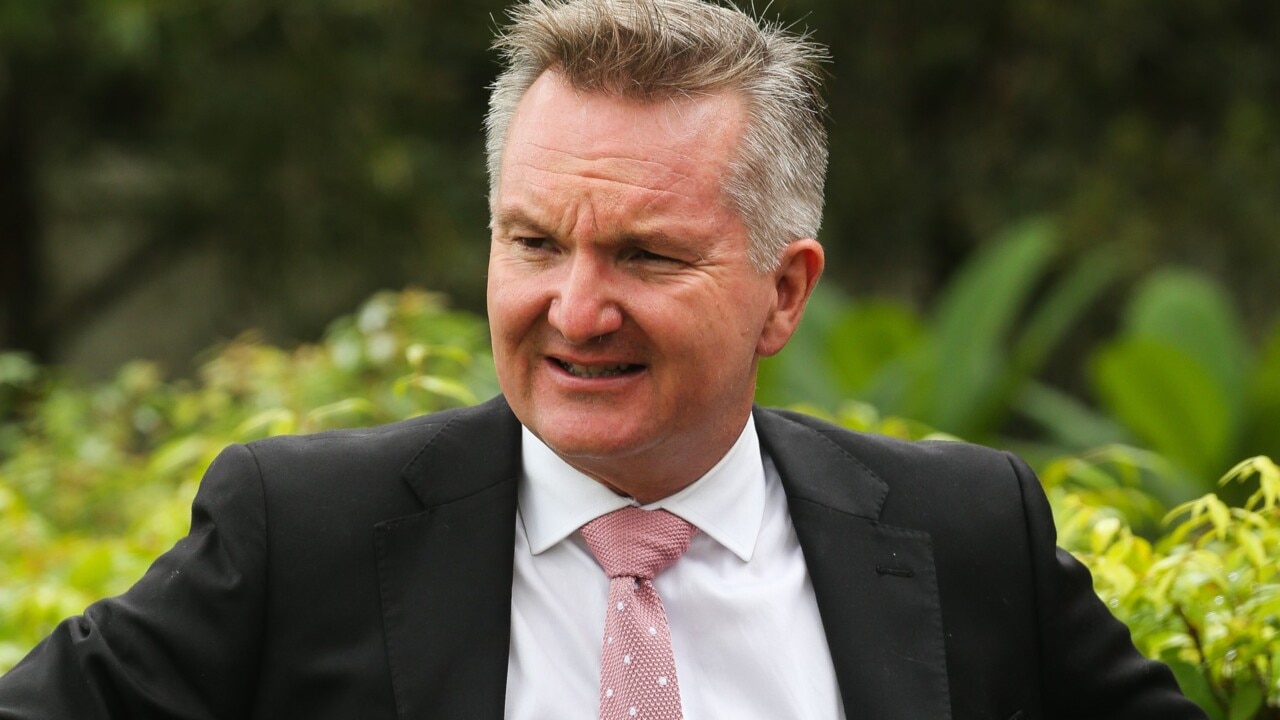Capacity Investment Scheme massively oversubscribed, energy minister says
The first large-scale auction in the revamped Capacity Investment Scheme has indicated the plan will be successful in accelerating new developments, the federal Energy minister has declared.

The first round of bids for the federal Labor’s centrepiece energy policy attached bids with a combined capacity of four times the government had tendered for and indicates the effectiveness of the mechanism, Energy minster Chris Bowen has declared.
Labor last year said it would underwrite 32GW of new renewable energy and storage development in a bid to meet its 2030 target, but senior industry figures — notably EnergyAustralia’s managing director Mark Collette — said the scheme was potentially too cumbersome.
Moving to defend the policy, Mr Bowen said the first auction for new renewable energy development had now closed and projects with a combined capacity of 24GW had sought to join the scheme. The federal government in conjunction with states had tendered for just 6GW.
“There is a massive pipeline of renewables. Yes, we need the right policy settings and we have them with the Capacity Investment Scheme,” Mr Bowen told The Australian’s Energy Nation Forum.
The majority of tender capacity has been earmarked for NSW, with a target of 2.2GW of capacity for Australia’s most populous state. A further 0.3GW for South Australia, 1.4GW for Victoria and 0.3GW for Tasmania. The remaining 1.8GW will be allocated across the National Electricity Market, including Queensland.

While Mr Bowen seized on the result as evidence of the effectiveness of the scheme, other industry sources said it did not dispel the criticism of Mr Collette.
The EnergyAustralia executive has warned the complexity of the scheme will make picking who will be selected to be underwritten extremely difficult, while there is no onerous requirement on winners to actually deliver the projects.
Labor hopes the scheme will kickstart Australia’s ailing energy transition, but the design potentially exposes the taxpayer to substantial liability,
The scheme sees developers guaranteed a minimum return on new solar and wind projects. Should the wholesale electricity price fall below an agreed threshold, taxpayers will compensate the renewable energy project.
Should the wholesale electricity price exceed a metric, developers pay the government, a design which removes revenue risk from developers and accelerates investment.
Mr Bowen, however, said the substantial interest in the scheme would add downward pressure on contracted terms.
“The Capacity Investment Scheme may not cost the taxpayer a dollar,” said Mr Bowen.
Industry sources, however, said taxpayers were likely to have to subsidise the renewable projects, particularly as Australia’s record proliferation of rooftop solar sends the wholesale price across the National Electricity Market into negative territory frequently during some months.
Still, the scheme is Labor’s attempt to accelerate the development of new renewable energy projects and meet its 2030 targets.
Labor has set aggressive targets of having renewable energy generate more than 80 per cent of the country’s electricity by 2030 — the cornerstone of its plan to reduce emissions by 43 per cent.
But, the target looks increasingly in peril, with authorities saying Australia must develop new renewable energy sources of power urgently or risk a decade of unreliable electricity supplies.
Illustrating the issue, the NSW state Labor government earlier this month was forced to enter into a deal with Origin Energy to keep Australia’s largest coal power station, Eraring, open for at least two more years.
The NSW government insists the extension will provide time for developers to build sufficient replacements.
But, the challenge is stark, underscored by analysis compiled by The Australian which showed 15 of the 79 new energy projects considered by AEMO have experienced delays. The combined capacity of the 15 projects are nearly 3.5GW, which is larger than the output of Eraring.
Industry sources said the delays were the result of inflationary pressures, which have increased the costs of projects, planning holdups, transmission build issues and policy decisions.
Australia is struggling to build the high-voltage transmission lines needed to connect new developments to the grid, while recent policy from the federal government is also weighing on the plans of developers.






To join the conversation, please log in. Don't have an account? Register
Join the conversation, you are commenting as Logout